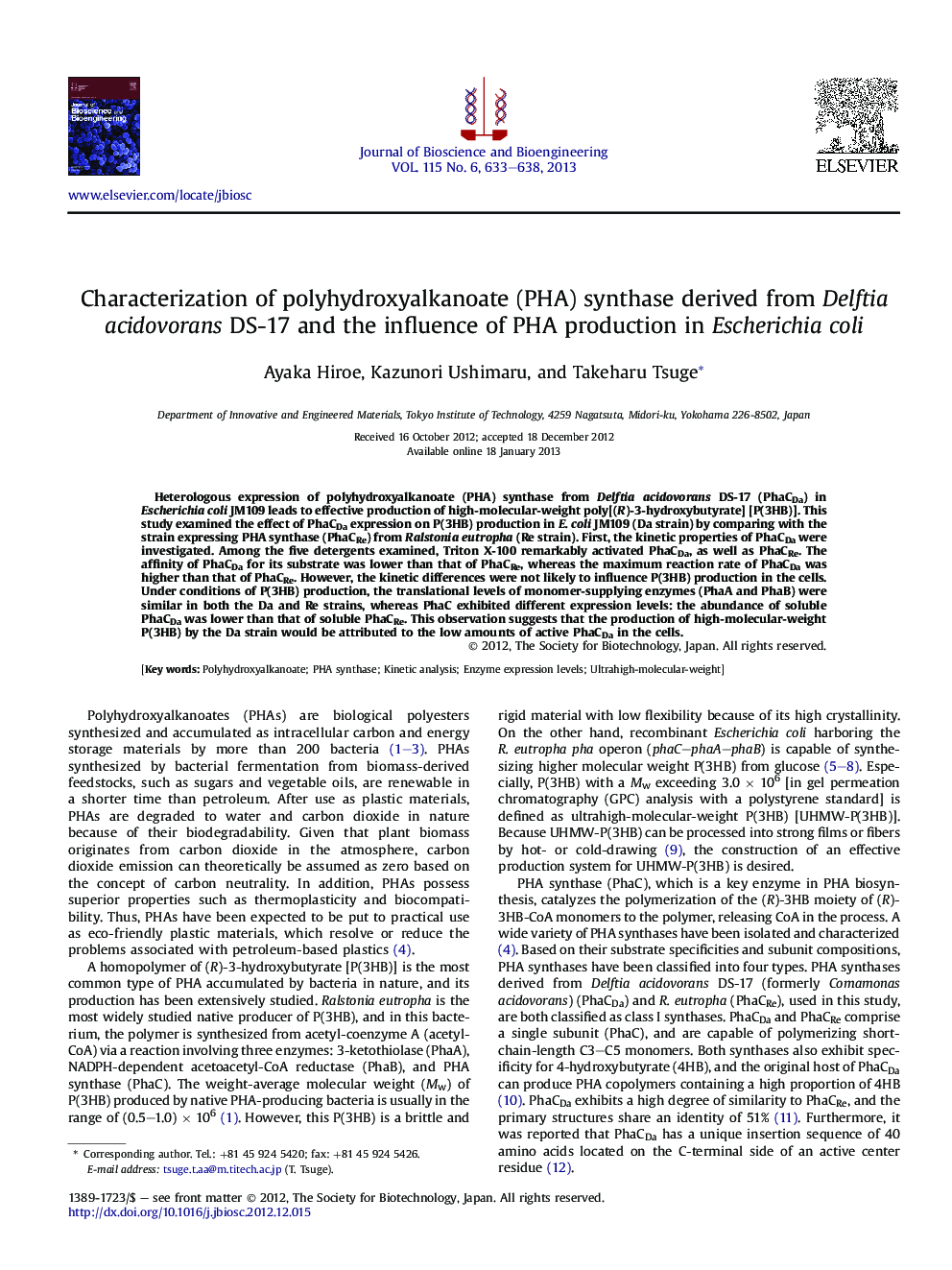| Article ID | Journal | Published Year | Pages | File Type |
|---|---|---|---|---|
| 20723 | Journal of Bioscience and Bioengineering | 2013 | 6 Pages |
Heterologous expression of polyhydroxyalkanoate (PHA) synthase from Delftia acidovorans DS-17 (PhaCDa) in Escherichia coli JM109 leads to effective production of high-molecular-weight poly[(R)-3-hydroxybutyrate] [P(3HB)]. This study examined the effect of PhaCDa expression on P(3HB) production in E. coli JM109 (Da strain) by comparing with the strain expressing PHA synthase (PhaCRe) from Ralstonia eutropha (Re strain). First, the kinetic properties of PhaCDa were investigated. Among the five detergents examined, Triton X-100 remarkably activated PhaCDa, as well as PhaCRe. The affinity of PhaCDa for its substrate was lower than that of PhaCRe, whereas the maximum reaction rate of PhaCDa was higher than that of PhaCRe. However, the kinetic differences were not likely to influence P(3HB) production in the cells. Under conditions of P(3HB) production, the translational levels of monomer-supplying enzymes (PhaA and PhaB) were similar in both the Da and Re strains, whereas PhaC exhibited different expression levels: the abundance of soluble PhaCDa was lower than that of soluble PhaCRe. This observation suggests that the production of high-molecular-weight P(3HB) by the Da strain would be attributed to the low amounts of active PhaCDa in the cells.
